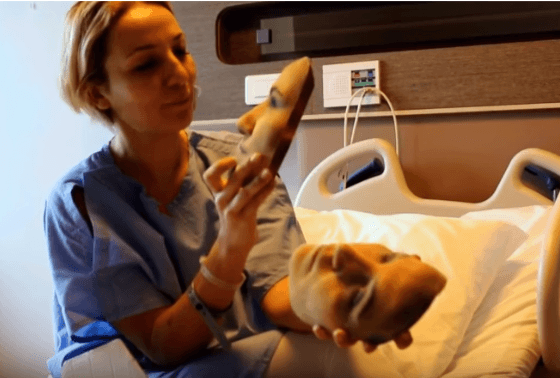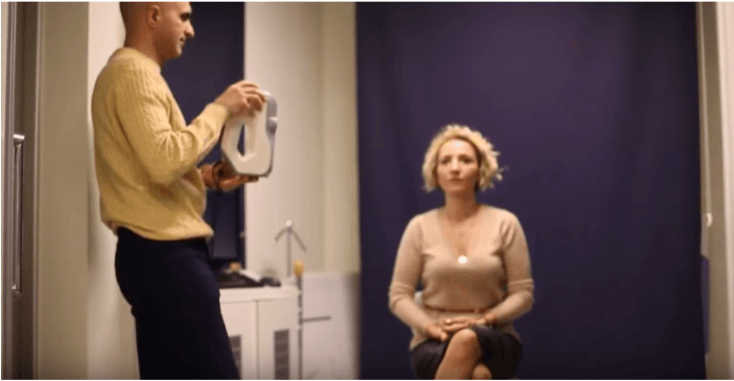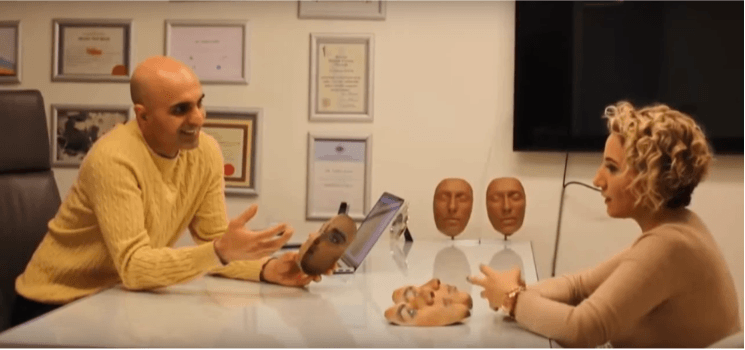 The decision to undergo plastic surgery is a difficult and personal one. Even when it’s required for reconstructive purposes, patients still face a lot of uncertainty. What will the results look like? Will I still look like myself? What if I regret my decision? It’s always been a gamble, but with the help of a caring surgeon and some 3D technology, patients can now get a much better idea of how their faces will appear after they recover from surgery.
The decision to undergo plastic surgery is a difficult and personal one. Even when it’s required for reconstructive purposes, patients still face a lot of uncertainty. What will the results look like? Will I still look like myself? What if I regret my decision? It’s always been a gamble, but with the help of a caring surgeon and some 3D technology, patients can now get a much better idea of how their faces will appear after they recover from surgery.
Dr. Yakup Avşar, founder of AVSAR Aesthetic Surgery Clinic in Istanbul, Turkey, used to create hand-sculpted masks of his patients’ faces to give them an idea of what changes they could expect. The technique wasn’t perfect, though; it was a time-consuming, arduous process that was difficult to make alterations to, and the results just weren’t realistic enough for the patients to get an accurate idea of how they would look. Then he discovered 3D scanning and 3D printing.
After seeing a 3D scanning and printing demonstration by Teknodizayn, a Turkish reseller for several prominent 3D printer and scanner manufacturers, Dr. Avşar realized he had found a perfect solution for his practice. He purchased an Artec Eva handheld scanner from Teknodizayn partner Artec 3D and began using it to scan the faces of his patients prior to surgery.
The advantages were immediately apparent. Other than the obvious time-saving aspects of the technology, the high-resolution scans also provided realistic, detailed color and texture renditions of the patients’ faces. After taking the scans, Dr. Avşar uses Autodesk 3ds Max to turn them into 3D models that he can easily edit to show the changes that the patients can expect to see post-surgery. He then 3D prints the models so that the patients can closely examine and feel the life-sized images of their future selves.
“It is what the patients want, said Dr. Avşar. “Before this, it wasn’t possible for us to show patients exactly what their face would look like following surgery. Enabling them to see and feel the realistic three-dimensional mask of their face gives patients a far greater understanding of the surgical results they can expect. This technology is powerful for patients in everyday practice.”
 In addition, it’s easy to print multiple mask variations so that patients can choose between different options. When Dr. Avşar began using the technology, he used a powder-based 3D printer to create the masks, but recently switched to an Mcor 3D printer for its advanced color capabilities, cost and eco-friendliness.
In addition, it’s easy to print multiple mask variations so that patients can choose between different options. When Dr. Avşar began using the technology, he used a powder-based 3D printer to create the masks, but recently switched to an Mcor 3D printer for its advanced color capabilities, cost and eco-friendliness.
“We always prefer to use eco-friendly, stable, and economic 3D printers,” he said. “Also, the colors produced on the Mcor 3D printer are far better then those produced on other 3D printers.”
Taking a facial scan with an Artec Eva scanner is simple. Only one scan should be taken, to ensure consistency of appearance, and keep the shoulders and back in view to “anchor” the image. Then scan the top of the head. If the image doesn’t look quite right, switch from Fine Serial Registration algorithm to Geometry Only, and allow Fine and Global registration to digitally build the image. Finally, Fusion will render the final image, which can then be printed or sent to a 3D printing service provider.
These days, Dr. Avşar is producing about 20 masks for his patients each month. He believes that he is the only aesthetic plastic surgeon in the world currently using 3D scanning and printing in this exact way, but that it won’t remain that way for long as other doctors and patients begin to see the benefits of the technology for not just facial surgery, but other types of body modification as well. Discuss in the Plastic Surgery forum at 3DPB.com.
[Sources: Artec 3D via email, Digital Engineering / Images: Mcor Technologies]
Subscribe to Our Email Newsletter
Stay up-to-date on all the latest news from the 3D printing industry and receive information and offers from third party vendors.
Print Services
Upload your 3D Models and get them printed quickly and efficiently.
You May Also Like
Heating Up: 3D Systems’ Scott Green Discusses 3D Printing’s Potential in the Data Center Industry
The relentless rise of NVIDIA, the steadily increasing pledges of major private and public investments in national infrastructure projects around the world, and the general cultural obsession with AI have...
3DPOD 260: John Hart on VulcanForms, MIT, Desktop Metal and More
John Hart is a Professor at MIT; he´s also the director of the Laboratory for Manufacturing and Productivity as well as the director of the Center for Advanced Production Technologies....
Etsy Design Rule Change Reduces Selection of 3D Printed Goods
Online marketplace Etsy has implemented a rule change requiring all 3D printed goods on the site to be original designs. The update to the site’s Creativity Standards states, ¨Items produced using...
E-Beam OEM Wayland Additive Partners with USC Racing to 3D Print Titanium Exhaust Collector
Every year, standards organization SAE International holds a competition called Formula SAE, in which students from both undergraduate and graduate programs design, build, and race small formula-style race cars. For...



































